At All Around Compounding Co., Ltd. (All Around Polymer Co., Ltd.), we specialize in high-quality engineering plastics, including customized nylon composites. For various applications, PA6 and PA66 are two of the most widely used polyamides. Knowing the differences between PA6 and PA66 in terms of material properties, density, and melting points helps engineers and manufacturers make informed choices. This guide provides a detailed comparison of PA6 and PA66, focusing on their characteristics, advantages, and typical uses. Based on our extensive industry experience, whether you're considering PA6 for its flexibility or PA66 for high-stress applications, our guide covers essential insights for these versatile materials.
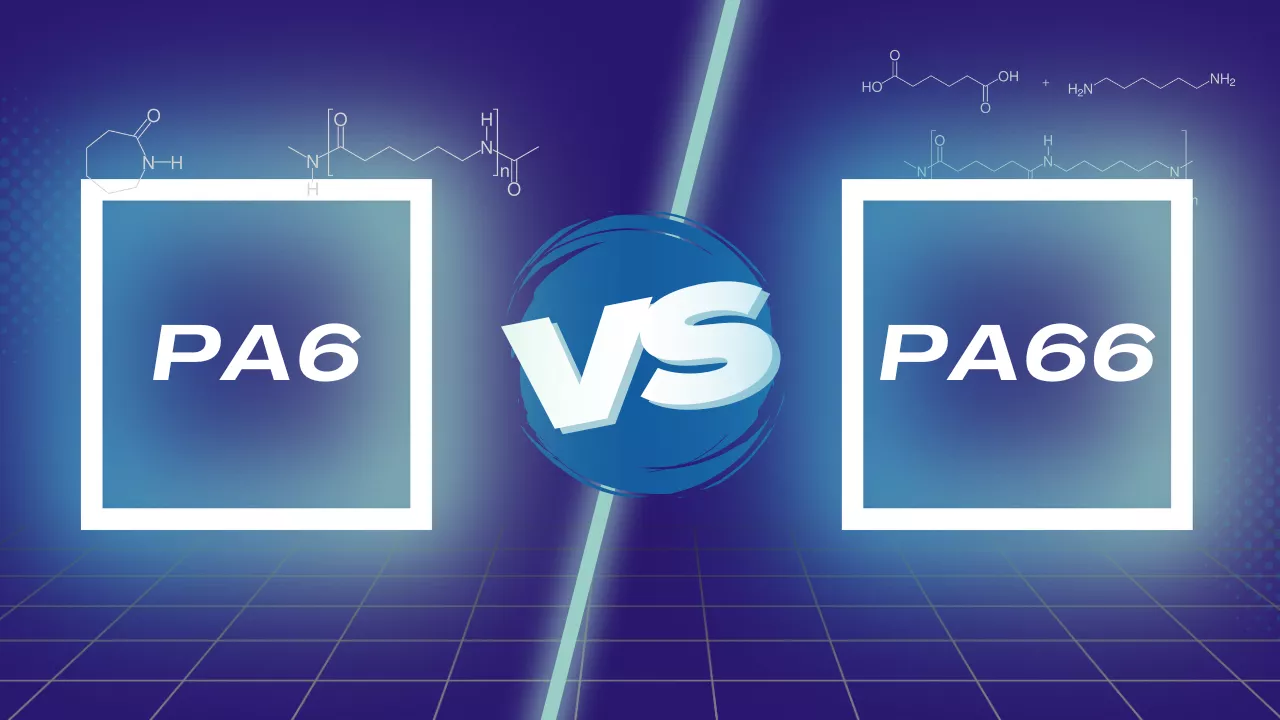
Understanding PA6 and PA66: Material Characteristics
PA6 (Nylon 6) and PA66 (Nylon 66) are both types of nylon known for their mechanical strength, thermal resistance, and versatility. However, their structural and material differences make each suitable for specific applications:
PA6: Easier to process due to its lower melting point, PA6 is a cost-effective choice for applications not requiring extreme conditions. It also offers better impact resistance and flexibility. However, PA6 has higher water absorption, which may affect dimensional stability, and it has lower tensile strength than PA66.
PA66: With superior tensile strength and rigidity, PA66 is ideal for high-temperature applications and offers enhanced dimensional stability due to its lower water absorption rate. Despite these benefits, PA66 is more challenging to process due to its higher melting point and generally costs more than PA6.
Key Differences Between PA6 and PA66
Here's a quick comparison chart to help you choose between PA6 and PA66 based on key properties and applications::
| Property | PA6 | PA66 |
|---|---|---|
| Molecular Structure | Single repeating unit | Two repeating units |
| Density | 1.13 | 1.14 |
| Melting Point (°C) | 220 | 260 |
| Water Absorption | Higher | Lower |
| Crystallinity | Lower | Higher |
| Tensile Strength (MPa) | Lower | Higher |
| Impact Resistance (kJ/m²) | Higher | Lower |
| Thermal Stability (°C) | Continuous use up to 180°C | Continuous use up to 200°C |
| Processing Temperature (°C) | 230 - 250 | 270 - 290 |
| Molding Temperature (°C) | 80 - 100 | 90 - 120 |
| Molding Shrinkage (%) | 0.6 | 0.8 |
| Heat Deflection Temperature (°C) | 170 | 250 |
| Applications | Automotive parts, Office furnitures, Bicycles | High-stress automotive parts, Electrical components, Sports equipments |

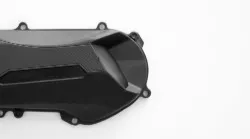



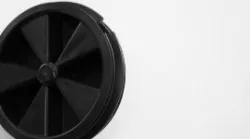
PA6 and PA66: Which to choose?
The choice between Nylon 6 (PA6) and Nylon 66 (PA66) primarily depends on the specific requirements of your project. Both materials offer valuable performance characteristics, and the decision should be based on the application needs, such as strength, rigidity, and heat resistance, referencing the comprehensive comparison chart above.
Below, we provide general guidance on the suitable applications for PA6 and PA66 to give you a foundational understanding of these two materials.
Nylon 6 is known for its high ductility, ease of processing, and cost-effectiveness, making it ideal for general applications.
Nylon 66 offers superior strength, rigidity, and heat resistance.
However, for more demanding requirements, PA6 and PA66 can be modified or reinforced with various fillers to enhance their original properties and expand their range of applications. These modified or reinforced nylons are referred to as nylon compounds, which we will introduce in more detail below.
PA6 and PA66 Compounds: Enhancing PA6 and PA66 with Composites
Reinforcing PA6 and PA66 with fillers like glass fiber, carbon fiber, or impact modifiers can improve their properties:
-
Increased Strength and Stiffness: Reinforcing PA6 and PA66 with glass or carbon fibers results in composites that can handle higher loads and stress without deforming. (Read more: Top Plastics for Metal Replacement in Manufacturing : Benefits, Choices, and Analysis)
-
Enhanced Thermal Properties: By adding specific fillers, the heat resistance of these nylons can be improved, allowing them to maintain performance at elevated temperatures. (Read more: How to Select Car Headlight Housing Materials)
-
Improved Dimensional Stability: Reduced water absorption and enhanced rigidity help maintain the shape and size of components, even in variable environmental conditions.
-
Improved Toughness: Impact modifiers can significantly improve the toughness of nylon composites, making them ideal for applications where durability and resistance to sudden forces are critical. These modifiers help absorb and dissipate energy, reducing the risk of material failure under impact. (Read more: Enhance Nylon Durability and Flexibility with the Right Impact Modifier)
| Composite Type | Enhancements |
|---|---|
| Glass Fiber Reinforced | Enhances strength, stiffness, and dimensional stability. Used in automotive components, power tools, and sports equipment. |
| Mineral-Filled | Improves rigidity and thermal stability. Commonly used in electrical housings and structural parts. |
| Flame-Retardant | Provides safety in electrical and electronic applications, used in connectors and switches |
| Carbon Fiber Reinforced | Offers excellent strength-to-weight ratio and electrical conductivity. Used in aerospace, automotive, and high-performance sports equipment. |
| Impact Modified | Increases toughness and resistance to impact forces, reducing fracture risks. Suitable for applications requiring enhanced durability and shock absorption. |

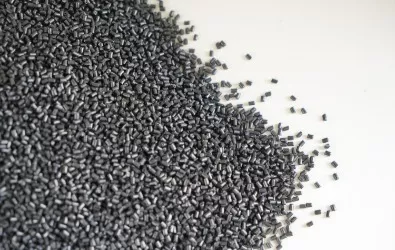
Applications of PA6 and PA66
PA6 and PA66 are widely used in various industries due to their unique properties. Here's a look at some common applications:
-
Automotive Industry: PA6 is used in the production of flexible parts such as steering column, seat belt buckle, and side mirror assembly due to its good impact resistance and moderate tensile strength.
-
Office Furniture: PA6 is utilized in manufacturing various office furniture components, offering good flexibility and durability.
-
Bicycles: PA6 is employed in the production of bicycle parts, providing necessary flexibility and impact resistance for different components.



PA66
-
High-Stress Automotive Parts: PA66 is preferred for high-stress parts such as engine components, manifold, fuel rail and water tank cover owing to its superior tensile strength and higher thermal stability.
-
Electrical Components: PA66 is used in connectors, switches, and other high-performance electrical components where rigidity and dimensional stability are crucial.
-
Sports Equipment: PA66 is ideal for applications requiring high mechanical strength and rigidity. It is commonly used in the production of ski bindings, helmets, and protective gear, providing durability and safety in demanding sports environments.

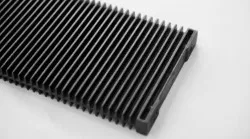
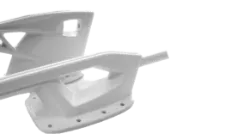
FAQ: Frequently Asked Questions About PA6 and PA66
- Which nylon type is better for high-temperature environments? PA66, due to its higher melting point and thermal stability.
- What are the cost considerations between PA6 and PA66? PA6 is generally more cost-effective, while PA66 offers superior strength and rigidity at a higher cost.
- Can PA6 and PA66 be recycled? Yes, both are recyclable, making them environmentally friendly options.
Case Study: Tailored Solutions for Our Clients
At All Around Compounding Co., Ltd. (All Around Polymer Co., Ltd.), we pride ourselves on our customer-centric approach and our ability to provide the best material solutions for our clients' needs. Here's a case study highlighting how we helped a client choose the optimal material for their application:
Client Background:
A leading automotive parts manufacturer approached us with a challenge. They were developing a new line of engine components and were uncertain whether to use PA6 or PA66 for their project. They needed a material that could withstand high temperatures and stress while maintaining dimensional stability.
Our Approach:
- Initial Consultation: We started with a detailed consultation to understand their specific needs, performance requirements, and the operational environment of the components.
- Material Analysis: Based on their requirements, we conducted a thorough analysis comparing the properties of PA6 and PA66.
- Recommendation: Given the high-stress and high-temperature conditions, we recommended PA66 due to its superior tensile strength, thermal stability, and lower water absorption.
- Prototype Development: We assisted in developing prototypes using our high-quality PA66 composites, ensuring they met all performance criteria.
- Testing and Feedback: The prototypes were rigorously tested under real-world conditions. The client provided feedback, and we made minor adjustments to optimize performance.
Outcome:
The client successfully launched their new line of engine components, which performed exceptionally well under high-stress conditions. Our PA66 composites provided the necessary strength and stability, contributing to the product's overall success. The client praised our attentive service, expertise, and the high quality of our materials.
Conclusion
Both PA6 and PA66 offer unique advantages depending on the application requirements. PA6 is preferred for applications needing flexibility and impact resistance, while PA66 is ideal for high-stress, high-temperature environments. Understanding these differences, including aspects like PA6's density and melting point, can help manufacturers select the appropriate material to ensure optimal performance and longevity of their products. For example, the difference between PA66 and PA6 may influence the choice in automotive or aerospace applications where weight and material properties are critical.
Moreover, reinforcing PA6 and PA66 with materials like glass fiber, impact modifiers or carbon fibers can significantly enhance their mechanical properties, allowing them to achieve better performance in demanding applications. This reinforcement enables these nylons to handle greater stress and environmental challenges, making them more versatile and reliable for various industrial uses.
Ready to choose the right material for your application? Contact us at info@aaccl.com for expert advice and high-quality nylon composite solutions tailored to your needs.

